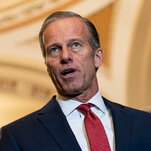
Why the Fed Is Poised to Raise Interest Rates



Prices for groceries, couches and rent are all climbing rapidly, and Federal Reserve officials have been warily eyeing that trend. On Wednesday, they are expected to take their biggest step yet toward counteracting it.
Central bank officials — who have been signaling for months that they are preparing to pull back economic support — are expected to raise their policy interest rate by a quarter percentage point. That small change will carry with it a major signal. Policymakers are telling markets and the public that they have fully pivoted to inflation-fighting mode and will do what is necessary to make sure price gains do not remain hot for months and years to come.
The Fed will release its decision at 2 p.m., and Jerome H. Powell, the central bank’s chair, will hold a news conference at 2:30 p.m. The Fed is acting at a tense moment for many consumers, when people are worrying about rising day-to-day expenses and trying to think through what higher interest rates could mean for their finances. Here’s a rundown of what is happening, why it is happening and what it is likely to mean for markets and the economy.
The Fed is taking its foot off the accelerator.

20
%
18
Federal funds target rate
16
14
12
Periods of Fed
rate increases
10
8
6
Expected
4
2
1970
’75
’80
’85
’90
’95
2000
’05
’10
’15
’20

20
%
18
Federal funds target rate
16
14
12
Periods of Fed rate increases
10
8
6
4
2
Expected
1970
’75
’80
’85
’90
’95
2000
’05
’10
’15
’20

20
%
18
Federal funds target rate
16
14
12
Periods of Fed rate increases
10
8
6
4
2
Expected
1970
’75
’80
’85
’90
’95
2000
’05
’10
’15
’20
The Fed is poised to increase the federal funds rate, a short-term borrowing cost for banks, in what officials have signaled will be the first of a steady series of moves. Fed policy changes trickle out through other types of interest rates — on mortgages, car loans and credit cards. Some of the interest rates that consumers pay to borrow money have already moved higher in anticipation of the Fed’s coming adjustments.
The Fed will preview just how many times it expects to increase borrowing costs in 2022 and 2023 in a fresh Summary of Economic Projections, a quarterly release that will come out alongside the March statement. Investors expect as many as seven rate increases this year, which would take the funds rate above 1.75 percent.
That’s because inflation is hot.

+
14
%
+
12
Year-over-year change in the
Consumer Price Index
+
10
Periods of Fed
rate increases
+
8
+7.9%
in Feb.
+6.4%
+
4
+
2
–
2
1970
’75
’80
’85
’90
’95
2000
’05
’10
’15
’20

+
14
%
+
12
Year-over-year change in the
Consumer Price Index
+
10
+
8
+7.9%
in Feb.
Periods of Fed rate increases
+6.4%
+
4
+
2
–
2
1970
’75
’80
’85
’90
’95
2000
’05
’10
’15
’20

+
14
%
+
12
Year-over-year change in the
Consumer Price Index
+
10
Periods of Fed rate increases
+
8
+7.9%
in Feb.
+6.4%
+
6
+
4
+
2
–
2
1970
’75
’80
’85
’90
’95
2000
’05
’10
’15
’20
The policy changes come at a challenging moment for central bankers: They are in charge of maintaining price stability, and inflation is running at the fastest pace in four decades. While officials expect price gains to moderate this year, how quickly and how much that will happen are uncertain, especially as war in Ukraine pushes up fuel costs and fresh virus restrictions in China threaten to perpetuate supply chain disruptions.
The Fed is also in charge of fostering maximum employment, but with hiring rapid and more open jobs than there are available workers, that goal appears to have been achieved, at least for now.
Higher rates are likely to slow strong consumer demand.

+
30
%
+
25
Consumer spending
+
20
Periods of Fed
rate increases
+
15
+11.8%
+
10
in Jan.
+
5
–
5
Year-over-year change in personal
consumption expenditures,
seasonally adjusted annual rate
–
10
–
15
1970
’75
’80
’85
’90
’95
2000
’05
’10
’15
’20

+
30
%
+
25
Consumer spending
+
20
Periods of Fed rate increases
+
15
+11.8%
+
10
in Jan.
+
5
–
5
Year-over-year change in personal consumption expenditures,
seasonally adjusted annual rate
–
10
–
15
1970
’75
’80
’85
’90
’95
2000
’05
’10
’15
’20

+
30
%
+
25
Consumer spending
+
20
Periods of Fed rate increases
+
15
+11.8%
+
10
in Jan.
+
5
–
5
Year-over-year change in personal consumption expenditures,
seasonally adjusted annual rate
–
10
–
15
1970
’75
’80
’85
’90
’95
2000
’05
’10
’15
’20
The idea behind raising rates is simple: Higher borrowing costs can slow down inflation by tempering demand. When it costs more to borrow, fewer people can afford houses and cars, and fewer businesses can afford to expand or buy new machinery. Spending pulls back. With less activity happening, companies need fewer workers. Less demand for labor makes for slower wage growth, which cools demand further. Higher rates effectively pour cold water on the economy.
Fed changes could also hurt stock and other asset prices.

5,000
+2.1%
S&P 500
Tuesday
1,000
Periods of Fed
rate increases
Scale is adjusted so that
percentage changes
are comparable
100
50
1970
’75
’80
’85
’90
’95
2000
’05
’10
’15
’20

5,000
+2.1%
Tuesday
S&P 500
1,000
Periods of Fed rate increases
Scale is adjusted so that percentage changes are comparable
100
50
1970
’75
’80
’85
’90
’95
2000
’05
’10
’15
’20

5,000
+2.1%
Tuesday
S&P 500
1,000
Periods of Fed rate increases
Scale is adjusted so that percentage changes are comparable
100
50
1970
’75
’80
’85
’90
’95
2000
’05
’10
’15
’20
The effects of higher rates might be visible in markets. Higher interest rates tend to eventually lower stock prices — in part because it costs businesses more to operate when money is expensive to borrow, and in part because Fed rate increases have a track record of touching off recessions, which are terrible for stocks. Pricier borrowing costs also tend to weigh on the value of other assets, like houses, as would-be buyers shy away from the market.
The Fed is also preparing to shrink its balance sheet of bond holdings, and many economists expect Fed officials to release a plan to do so as soon as May. That could push up longer-term rates and will probably further pull down stock, bond and house prices.
The goal here is a soft landing.

14
%
Unemployment Rate
12
Periods of Fed
rate increases
10
8
6
4
3.8%
in Feb.
2
1970
’75
’80
’85
’90
’95
2000
’05
’10
’15
’20

14
%
Unemployment Rate
12
Periods of Fed rate increases
10
8
6
4
3.8%
in Feb.
2
1970
’75
’80
’85
’90
’95
2000
’05
’10
’15
’20

14
%
Unemployment rate
12
Periods of Fed rate increases
10
8
6
4
3.8%
in Feb.
2
1970
’75
’80
’85
’90
’95
2000
’05
’10
’15
’20
You might wonder why the Fed would want to slow down the economy and hurt the stock market. The central bank wants a strong economy, but sustainability is the name of the game: A little pain today could mean less pain tomorrow.
The Fed is trying to get inflation down to a more comfortable level — where price increases do not influence people’s spending choices or daily lives. Officials hope that if they can slow the economy enough to reduce inflation, without damaging it so much that it tips into a recession, they can set the stage for a long and steady expansion.
“I think it’s more likely than not that we can achieve what we call a soft landing,” Mr. Powell said during recent testimony before lawmakers.
The Fed has let the economy down easy before: In the early 1990s it raised rates without sending unemployment higher, and it appeared to be in the process of achieving a soft landing before the pandemic struck, having raised rates between 2015 and 2018.
But economists have warned that it could be a tough act to pull off this time around.
“I wouldn’t rule it out,” Donald Kohn, a former Fed vice chair, said of a soft landing. But he said a clampdown on demand that pushed unemployment higher was also possible.
Image

The Federal Reserve is expected to raise its interest rate for the first time since 2018 on Wednesday, joining a group of global peers taking this step to tackle uncomfortably high inflation.
But the tightening in monetary policy comes at a time when the outlook for the global economy is darkening because energy and commodity prices have surged higher since Russia’s invasion of Ukraine. Last week, the International Monetary Fund said the war and sanctions on Russia are likely to cause a downgrade of its global growth forecasts.
It is making the job of central bankers harder. While their mission includes keeping inflation stable — usually targeting an annual rate of 2 percent — they also don’t want to cool the economy too much and destabilize the postpandemic recovery.
On Thursday, the Bank of England is expected to raise rates for the third consecutive policy meeting. Last month, when the benchmark rate was raised to 0.5 percent, the bank’s governor, Andrew Bailey, said officials didn’t raise the rate because the economy was “roaring away” but because it was the only way to bring inflation back toward target. The annual inflation rate in Britain climbed to 5.5 percent in January, outpacing wage growth and fueling concerns about a cost of living crisis pushing people into poverty as households struggle with higher energy bills and grocery costs.
The Bank of Canada raised interest rates this month to 0.5 percent, from 0.25 percent, where it had been since the start of the pandemic in March 2020. Economists expect further rate increases as inflation climbed to 5.7 percent last month, well above the range the central bank targets. In the past few months, central banks in Poland, Norway, New Zealand and South Korea have also raised rates.
In the eurozone, where inflation is at 5.8 percent, the European Central Bank has moved one step closer to increasing its interest rates for the first time in a decade. Last week, it proposed an end date for its bond-buying program, a precursor to higher interest rates, which are currently negative. Purchases will stop in the third quarter if the inflation outlook doesn’t weaken.
But the war in Ukraine, which has exacerbated rising energy and food prices, has clouded the outlook. German business leaders are increasingly fearful of a recession. While inflation is expected to stay elevated for longer, the European Central Bank has cut its expectations for economic growth. “The risks to the economic outlook have increased substantially,” Christine Lagarde, the president of the bank, said last week.
March 14
March 15
March 16
4,200
4,250
4,300
The stock market’s rally continued for a second day on Wednesday, ahead of a highly anticipated announcement from the Federal Reserve about its plan to raise interest rates to combat persistent inflation.
While the Fed is already widely expected to announce it will raise interest rates from near zero, investors are likely to focus on the central bank’s outlook for the economy and the path ahead.
The Fed will release a statement and its economic projections at 2 p.m., Eastern time. A news conference by Jerome H. Powell, the central bank’s chair, will follow. Economists expect the Fed to lift interest rates by a quarter-percentage-point this month, and then again several times this year.
“Anything other than a 25 basis point hike would be a shock to the market,” said Solita Marcelli, chief investment officer for the Americas at UBS Global Wealth Management. “Markets will focus on the number of rate hikes in 2022.”
The S&P 500 climbed more than 1 percent in midday trading, adding to a gain of more than 2 percent the day before. The yield on 10-year U.S. Treasury notes, a benchmark for borrowing costs across the economy, rose 2 basis points, or 0.02 percentage points, to 2.2 percent.
The Fed’s move comes with inflation at the highest level in 40 years. The Consumer Price Index rose 7.9 percent through February, with higher prices for gas, food and rent contributing to the increase.
Higher rates can hinder the stock market’s performance because they make owning bonds more attractive and make borrowing more expensive for companies, but the Fed’s decision to try and control price gains is also a welcome step to many on Wall Street who are worried about the economic damage inflation can cause as it erodes consumer sentiment and spending.
Lenders stand to gain higher profits as interest rates on loans increase, and banks were all higher on Wednesday. JPMorgan Chase and Citigroup rose around 3 percent, while Bank of America and Wells Fargo were up around 2.5 percent.
In Europe, stock indexes rose, with the Stoxx Europe 600 up 3.1 percent. The gains came as peace talks between Ukraine and Russia continued for a third straight day, and Russian officials said the negotiations showed “progress on a number of positions.”
Asian markets were mostly higher on Wednesday, after Chinese officials pledged to support stock markets and end a crackdown on tech companies. The announcement came as China was scrambling to control its worst outbreak of Covid-19 since the pandemic began, prompting lockdowns and posing a threat of an economic slowdown.
Energy markets were volatile on Wednesday, after fears over a slowdown in demand in China triggered a drop in oil prices on Tuesday. Brent crude, the international standard, fell more than 1 percent to under $99 a barrel. West Texas Intermediate, the U.S. benchmark, fell to around $96 a barrel.
Image
Jerome H. Powell was expected to win approval from a key Senate committee on Wednesday to serve a second term as chair of the Federal Reserve, after a congressional fight over another key nominee.
The Senate Banking Committee has scheduled a session to vote on Mr. Powell’s nomination, along with three of President Biden’s other picks for the Fed — Lael Brainard, Lisa D. Cook and Phillip Jefferson. All four picks are expected to clear the committee, allowing their nominations to advance to the full Senate for a final confirmation vote.
The decision to hold a vote comes a day after Mr. Biden’s pick for the Fed’s top bank regulator, Sarah Bloom Raskin, withdrew from consideration. Senate Republicans and a key Democrat had said they would not vote to confirm her over her support for tougher oversight and her stance on climate regulation.
Source: https://www.nytimes.com/live/2022/03/16/business/fed-meeting-interest-rates

















